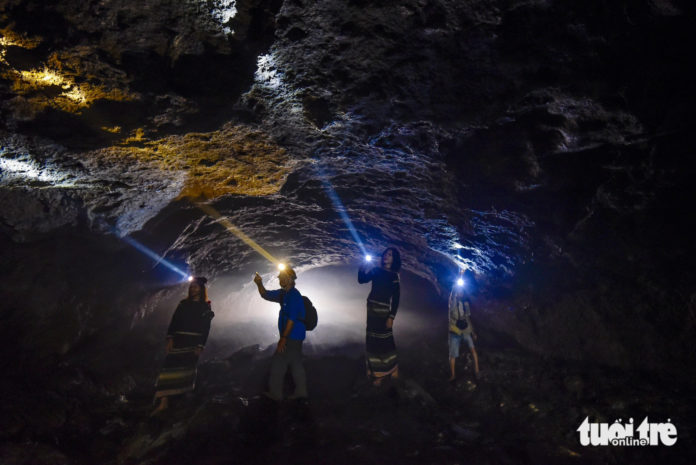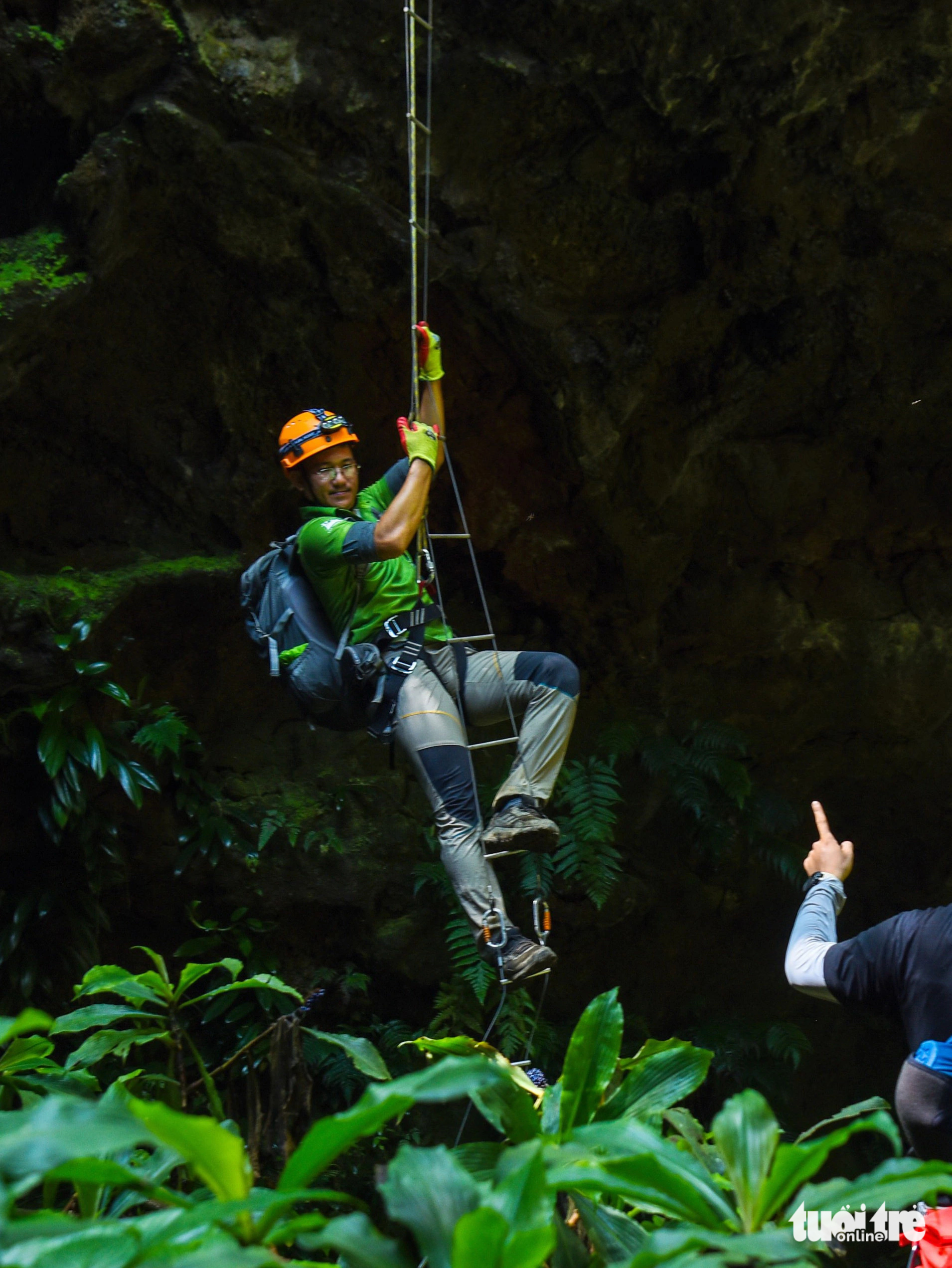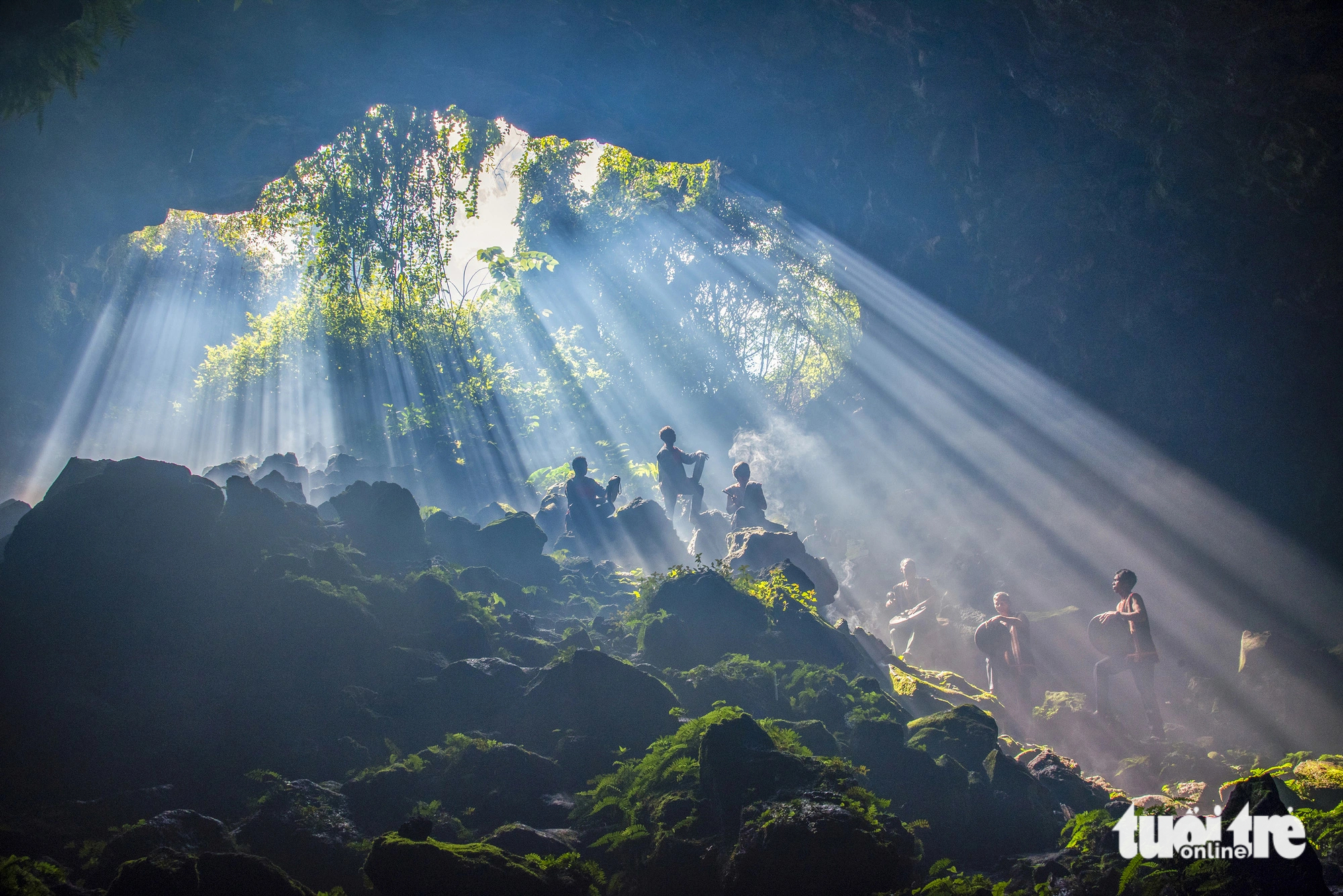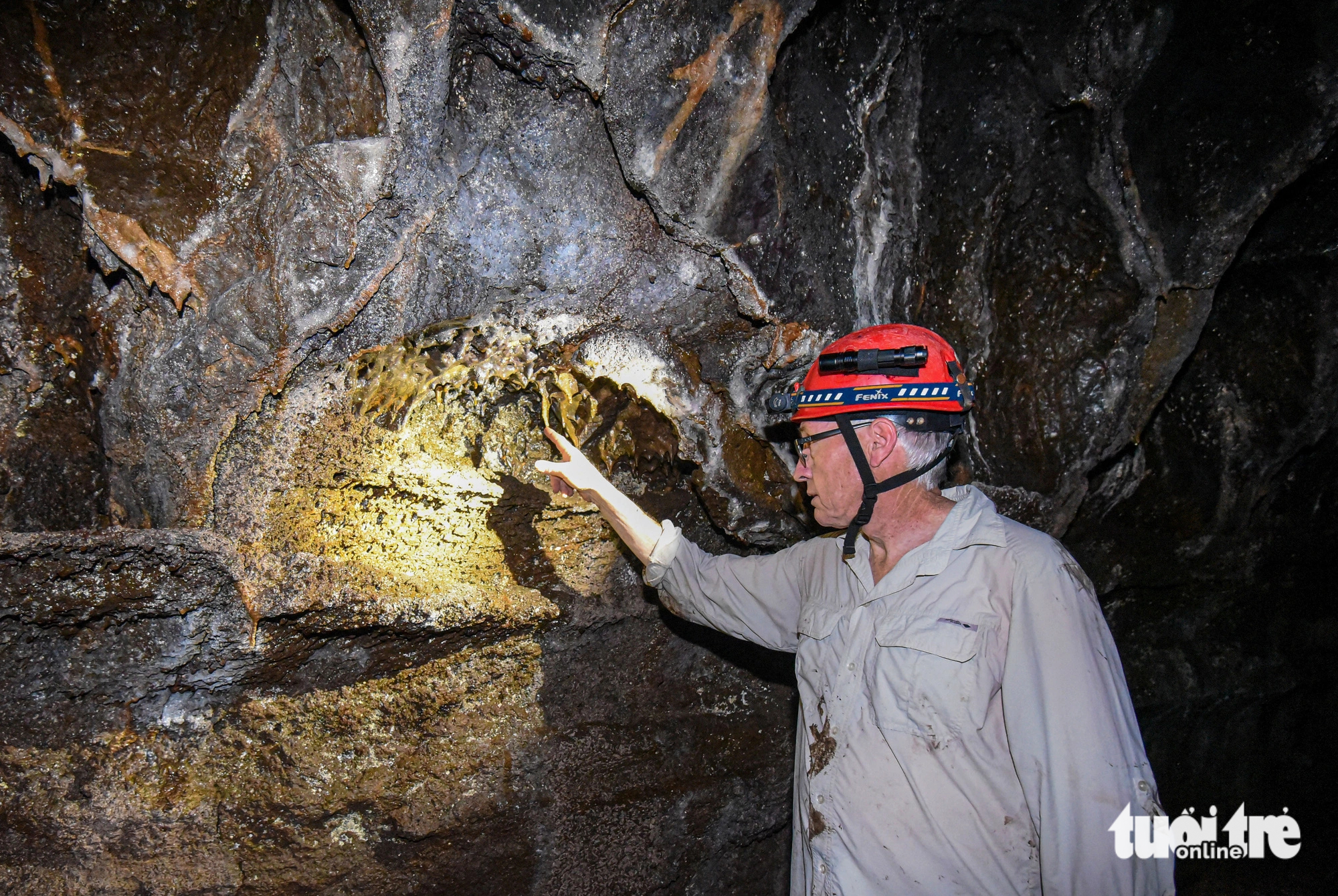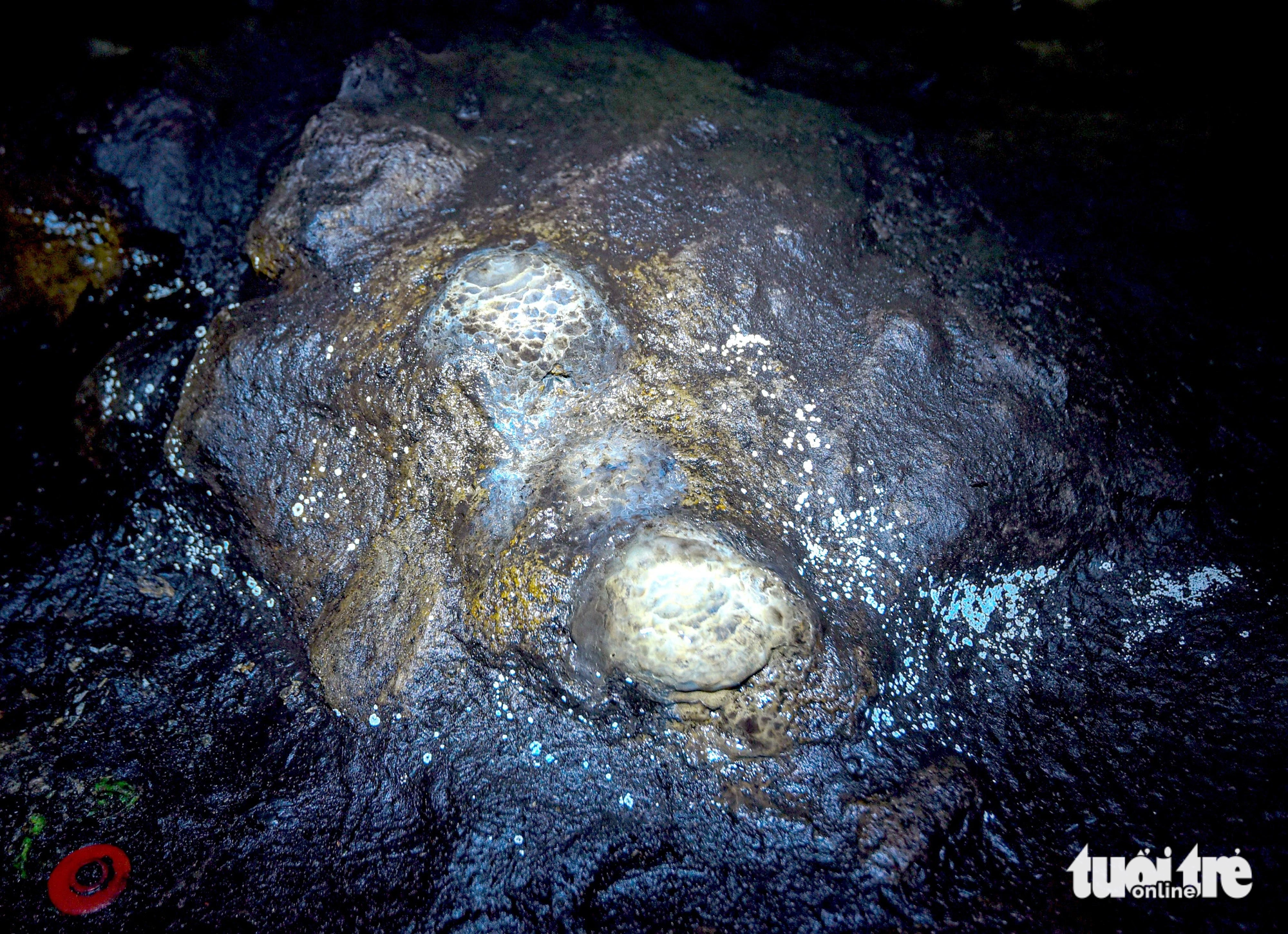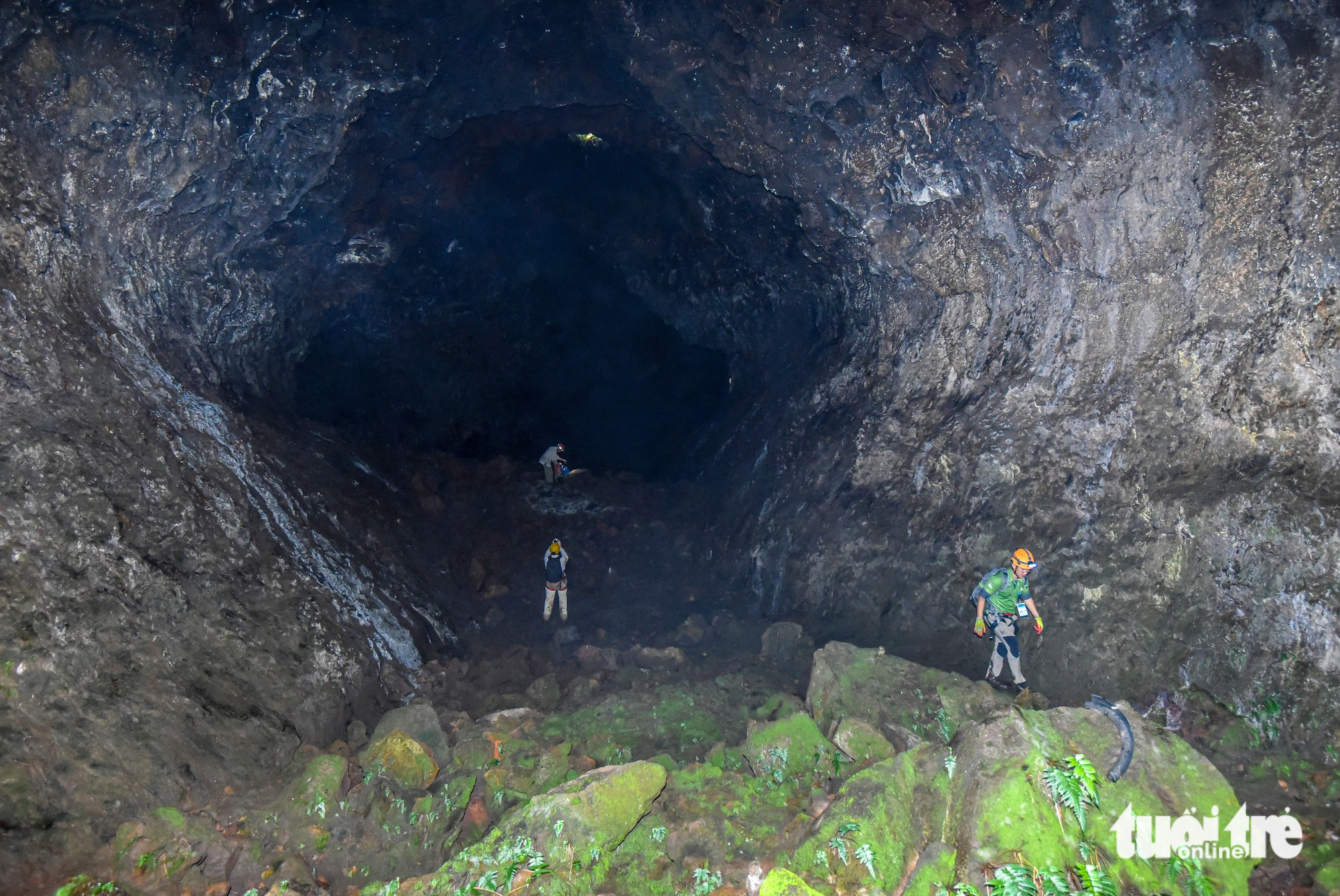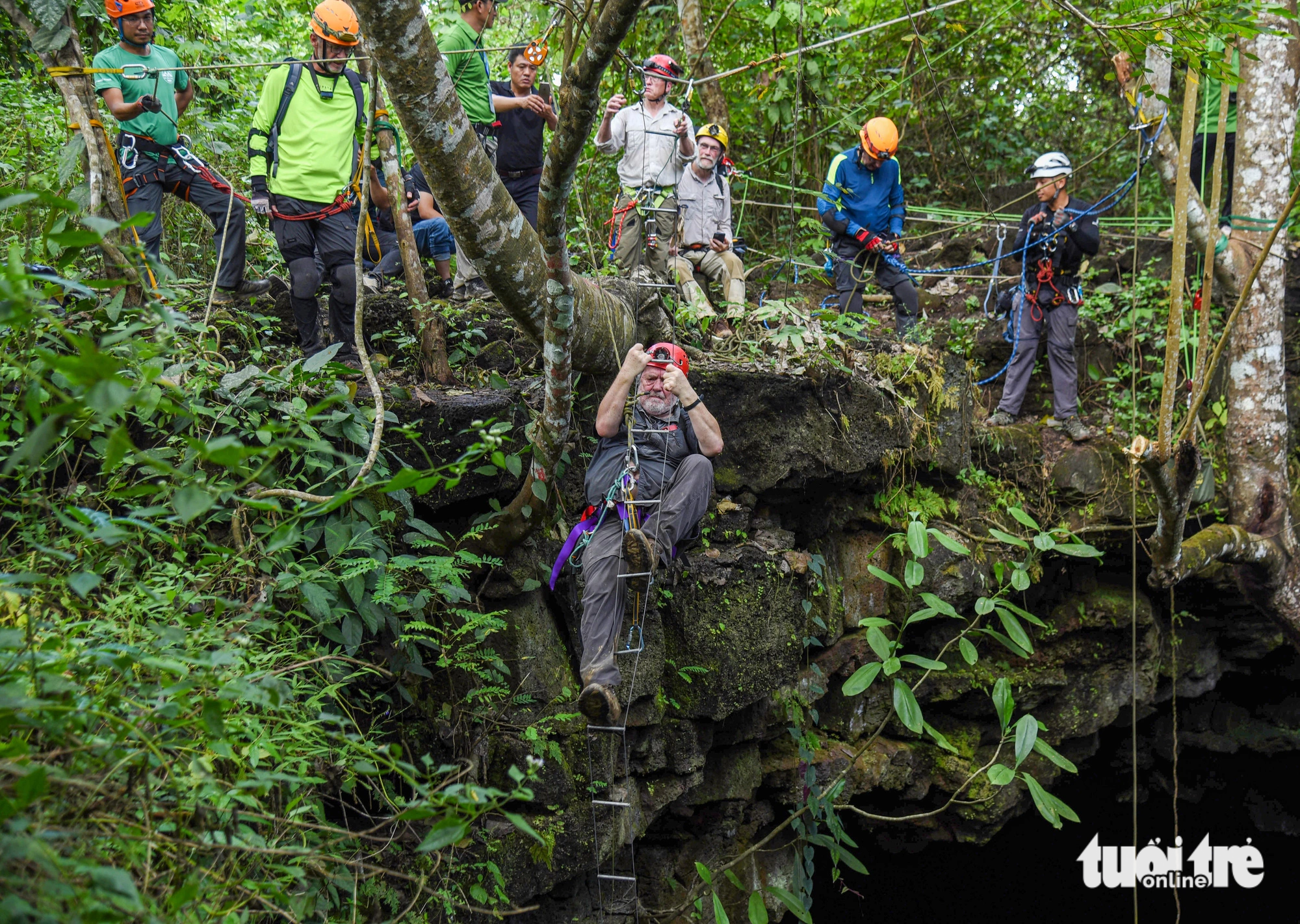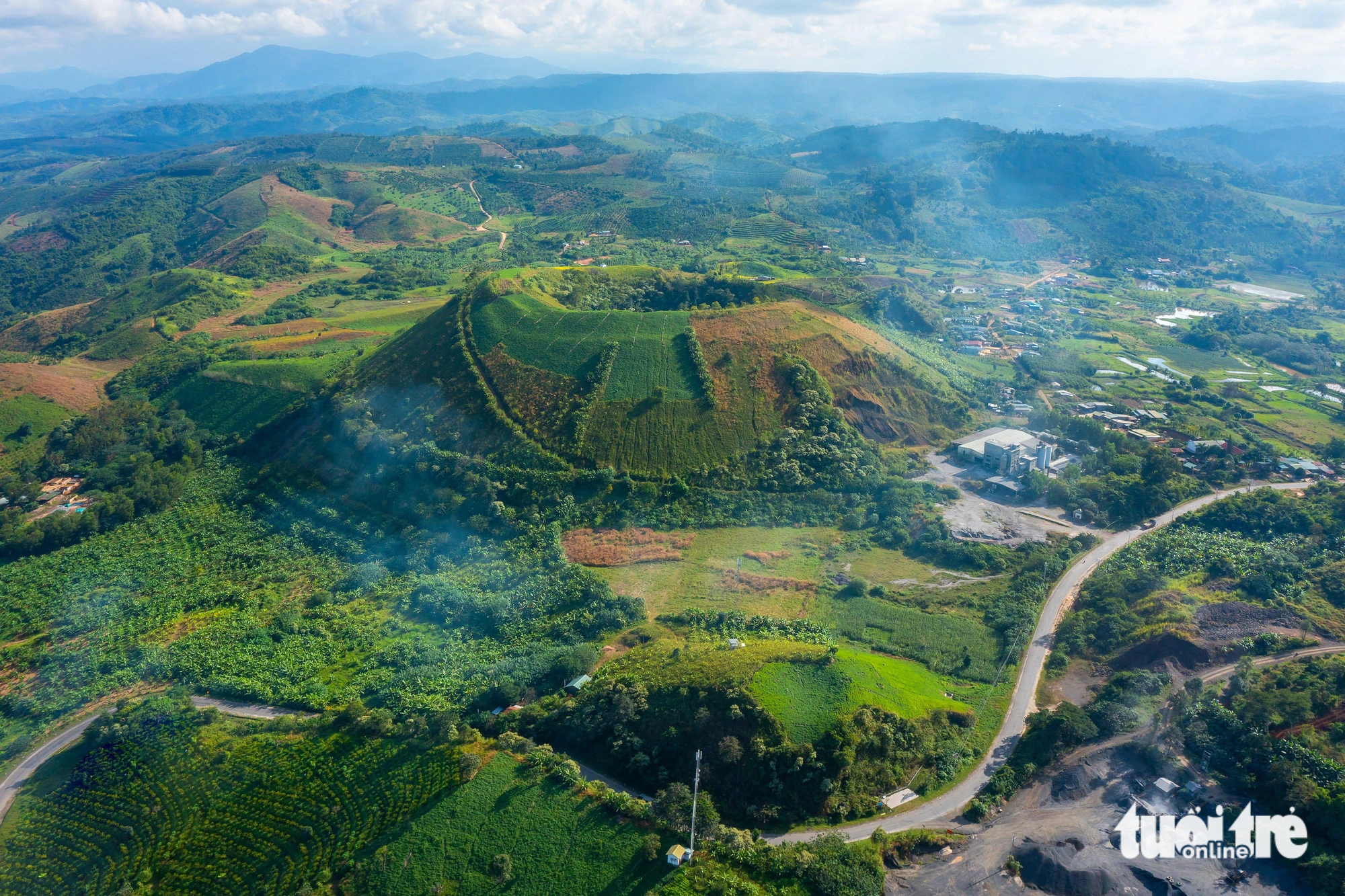The geopark was officially designated as a global geopark by UNESCO in 2020. It encompasses a vast area of 4,700 square kilometers, spanning Gia Nghia Town, as well as Krong No, Cu Jut, Dak Mil, Dak Song, and Dak Glong Districts.
The geopark showcases unique attributes encompassing geology, archaeology, culture, and biodiversity within the highland region.
The cave system in basalt stones, located predominantly in Krong No District, was discovered within the geopark in 2007 and is considered one of its main attractions.
According to the Japan Caving Association, the C7 is a magnificent tubular cavern located within the cavern system. Spanning over one kilometer in length, it holds the distinction of being Southeast Asia’s longest and most remarkable cave.
Additionally, it should be noted that caves C6 and C6-1 are not only significant for their geological value, but also for their archaeological importance. Scientists have discovered the remains of prehistoric humans within these caves, as well as three burial relics containing multiple cultural layers that date back approximately 6,000-7,000 years.
|
|
| Cave C7, a tubular cave measuring over one kilometer long, was recognized as the longest and most spectacular cave in Southeast Asia. Photo: Tuoi Tre |
The excavation team led by archaeologists successfully uncovered a plethora of archaeological finds within the caves. These invaluable discoveries include stone tools, shards of pottery, skeletal remains, and evidence of ancient wood-burning stoves, among a myriad of other artifacts.
Cave C6-1 has recently been officially designated as a national relic site in Vietnam.
According to scientists, the system contains over 100 caves of different sizes. Additionally, they have identified five craters within the area, namely Nam Dong and Bang Mo in Cu Jut, Nam Blang and Nam Kar in Krong No, and Nam Gle in Dak Mil.
|
|
| People are seen in a cave system in Krong No District, Dak Nong Province, located in Vietnam’s Central Highlands region. Photo: Tuoi Tre |
|
|
| The volcanic cavern system in Dak Nong Province in Vietnam’s Central Highlands region boasts unique geological features and shapes. Photo: Tuoi Tre |
|
|
| A photo shows features of a typical volcanic eruption such as lava lines and sinkholes. Photo: Tuoi Tre |
|
|
| Cavers explore the volcanic cavern system in Dak Nong Province in Vietnam’s Central Highlands region. Photo: Tuoi Tre |
|
|
| Cavers use rope ladders to enter some caves located deep inside the volcanic cavern system in Dak Nong Province in Vietnam’s Central Highlands region. Photo: Tuoi Tre |
|
|
| The Nam Kar volcanic cave in Krong No District is one of the five craters in the volcanic cavern system in Dak Nong Province in Vietnam’s Central Highlands region. Photo: Tuoi Tre |

